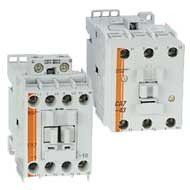Tech Tip: Most Common Causes of Contactor Chatter and Noise
QUESTION: What are the possible reasons for unexpected noise coming from the contactor?
CONTROL VOLTAGE
Typically, coils are designed to pick-up and operate between 85% and 110% of their rated voltage. To verify that the control voltage is aligned properly with the selected coil, the voltage should be measured at the coil terminals (A1/A2) and not at the voltage source since other control devices may be tapped off of the control source (e.g.; control transformer, power supply, etc.). The intent is to confirm that the voltage ratings shown on the coil match the incoming voltage source to the coil. Once the device that is being operated is in the sealed state, the drop-out voltage will be about 60% of the rated voltage. Excess heat is the main cause of shortening the life of a coil. Even though the coil can operate at 110% of rated voltage, doing so for long periods of time will create higher temperatures and may shorten coil life.
CONTROL SOURCE
Operating coils for contactors and relays rely on current in the windings to produce enough magnetic flux to span the ‘air gap’. The air gap is the distance between the pole faces of the yoke and armature which is at a maximum distance when the device is open or OFF. Once a START signal is initiated the coil will draw “inrush current” and the yoke and armature start to come together, the air gap decreases and current demand starts to decrease as well. The sealed state results in zero air gap and the amount of current required to keep the pole faces together is at a minimum and is referred to as “seal current” or “sealed current” or “steady state current”. The amount of current required to pick-up and seal an AC or DC controlled device can be calculated from the VA ratings for inrush and seal found in the specifications for that device. Simply divide the VA rating by the coil voltage to calculate the required ampere rating of the control source.
DEBRIS
Debris, especially large debris like plastic or metal shavings may make the device noisy and may cause the coil to draw more current than it is rated for at seal. Oxidation and rust can appear on pole faces and cause noise, also. This is more likely to be seen in older devices or those used in high humidity or corrosive environments. Pole faces are specially grounded to be flat to approximately .001” T.I.R. (total indicator reading) or less so they seal tightly against each other which is why they must be kept as free from debris as possible.
A common contributing factor to having a debris problem is created when the clean-up is done after enclosure/backpan modifications and an air gun is used to blow debris and particles out of the box. More harm is being done than good because the blowing of air creates flying debris and increases the likelihood of these particles ending up inside the components. A more productive way to remove the debris from inside an enclosure would be to use a vacuum, as opposed to an air gun.




